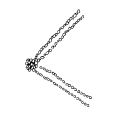Tag:archaeological_site=tumulus
Jump to navigation
Jump to search
| Description |
|---|
| Tumulus - a mound of earth and stones raised over a grave or graves. |
| Group: historic |
| Used on these elements |
| Requires |
| Useful combination |
| See also |
| Status: approved |
| Tools for this tag |
|
A ![]() tumulus is a mound of earth and stones raised over a grave or graves. Alternative names for a tumulus are barrow, burial mound, kurgan or kofun (in Northeast Asia, see Wikipedia).
tumulus is a mound of earth and stones raised over a grave or graves. Alternative names for a tumulus are barrow, burial mound, kurgan or kofun (in Northeast Asia, see Wikipedia).
How to map
Set a node ![]() or draw as an area
or draw as an area ![]() along the outline and tag it with
along the outline and tag it with
- historic=archaeological_site
- archaeological_site=tumulus
- name=* - often also Tumulus, Barrow or Mound is used as part of the name These shouldn't be used as name itself, see Names#Name_is_the_name_only
- field=yes - some graveyards consist of a number of tumuli. To avoid mapping all of them, the field tag can be used as an option.
- tumulus=* - type of tumulus (see the table below)
Tags to use in combination
- wikipedia=* - a link to Wikipedia's article about the feature
- wikidata=* - an ID of the specific Wikidata item
- historic:civilization=* (or more precise subtags) - the civilization (culture) that originally created the feature
- tourism=attraction - if it is a tourist attraction.
- heritage=* - if it is registered by an official heritage organisation.
Sub-types of tumuli in use
| tumulus=value | Definition and image | Taginfo |
|---|---|---|
| round_tomb | Circular mound or cropmark on satellite view. Easily confused with a fortification_type=ringfort or fortification_type=motte. | |
| mound | Mound of undefined shape. | |
| round_barrow |  Circular shaped tomb. See also round tomb above Circular shaped tomb. See also round tomb aboveIn the UK, ususally historic:period=bronze-age |
|
| ring-barrow |  Ring-shaped tomb, easily confused with a fortification_type=ringfort on satellite view Ring-shaped tomb, easily confused with a fortification_type=ringfort on satellite view |
|
| keyhole_tomb |  Keyhole-shaped tomb, i.e. a circular grave chamber with a long passage way to it. Common in the Sahara desert (example in Algeria). Keyhole-shaped tomb, i.e. a circular grave chamber with a long passage way to it. Common in the Sahara desert (example in Algeria).Kofuns in Japan a special type of keyhole tombs. Example in Japan |
|
| goulet |  From French goulet for gully, prominent type in the Sahara desert. Similar to keyhole tomb, but with the burial chamber not in the center of the circular enclosure. From French goulet for gully, prominent type in the Sahara desert. Similar to keyhole tomb, but with the burial chamber not in the center of the circular enclosure.Example in Algeria |
|
| platform |  Flat surface, can be circular, square or crescent shaped. Flat surface, can be circular, square or crescent shaped. |
|
| crater |  |
|
| antenna_tomb |  antenna or V-shaped tomb antenna or V-shaped tomb |
|
| crescent_tomb |  Crescent or half-circle shaped tomb Crescent or half-circle shaped tomb |
See also
- + archaeological_site=megalith
- + megalith_type=passage_grave - Passage grave
- + archaeological_site=megalith
- + megalith_type=long_barrow - Long barrow
Further reading
- Tumulus expedition report from the Sahara desert with diagrams of tumuli
- Nick Brooks et al.: Funerary sites in the «Free Zone»: Report on the second and third seasons of fieldwork of the Western Sahara Project, in: SAHARA 17/2006.

